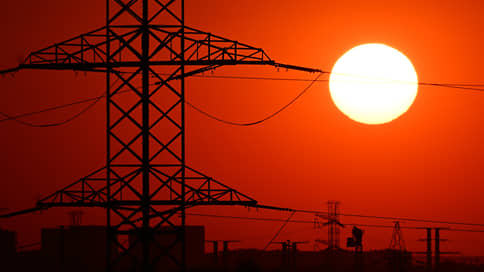The Ministry of Energy estimated the effect of mining in Siberia and the North Caucasus

Restrictions on mining in a number of regions of the Russian Federation led to a decrease in electricity consumption, according to various estimates, by 300–370 MW. The largest volume – 320 MW – came into the regions of Siberia, where the ban should facilitate the passage of the periods of peak loads. But electric grid organizations note a decrease in the necessary gross revenue, and miners say that some market participants bypass prohibitions.
The restrictions on mining, introduced in the part of the Irkutsk region, Buryatia and the Trans -Baikal Territory from January 1 to March 15, led to a decrease in consumption in the Siberian energy system by about 320 MW. This was reported to the Ministry of Energy. As emphasized in the ministry, this measure allowed to pass the period of maximum loads in January without the introduction of restrictions for consumers. In the regions of the North Caucasus, where mining has been limited since January, the load has decreased by about 50 MW. But, noted in the Ministry of Energy, part of the mining is still in the gray zone.
Deputy General Director of Bitriver Oleg Ogienko with reference to the data of the “system operator” (CO, the dispatcher of the energy system) evaluates a decrease in the power of industrial mining consumption in the regions of the ban by about 300-350 MW.
Decree of the Government of the Russian Federation No. 1869 dated December 23, 2024 restricts or completely prohibits cryptocurrency mining in a number of regions in order to stabilize energy consumption. Mining in the Russian Federation has been legalized since November 2024. Individual entrepreneurs and legal entities should be included in the register of miners, which leads the Federal Tax Service, for this. Individuals are allowed to obtain cryptocurrencies in the consumption of electricity within 6 thousand kWh per month. In November 2024, Acre noted that, according to the tariffs currently operating at that time, mining costs the cheaper in the Irkutsk region, Khakassia, Dagestan and the Tyumen region.
The ban on mining in a number of cities and regions of the Irkutsk region, Buryatia and the Trans -Baikal Territory will be introduced annually during the peak loads – from November 15 to March 15 – up to 2031. In the Karachay-Cherkess, Kabardino-Balkarian republics, North Ossetia-Alania, Ingushetia, Chechnya, Dagestan, Kherson and Zaporizhzhya regions, the DPR and LPR, a complete ban was introduced on March 15, 2031. According to regulators, measures should reduce the accident rate in the energy system at the PIC consumer moments and ensure technological connection (TP) of new consumers. In March, the Government of the Russian Federation allowed mining in the regions where the ban was introduced, subject to the use of its own generation.
The Chairman of the Board with Fedor Opadchiy, in the framework of the seminar, FAS on tariff regulation, said that he sees “some decrease” of power consumption last winter in the southeastern part of the Siberian Siberian State University. According to him, if the measures of mining are preserved, then in this energy -risk can be built less than 1.2–1.3 thousand MW of an additional new generation, evaluatively necessary at the moment in order to avoid potential energy deficiency.
I. about. The general director of the Irkutsk electric grid company (IES) Ilya Brilliantov told Kommersant that in the autumn-winter period of prohibition on mining, 308 MW of power consumed by legal miners was released in the territory of the Angara region. “These capacities for the specified period were unclaimed, and the end consumer did not feel the ban on the quality of electricity,” he says. At the same time, Ilya Diamonds indicates, Iesk as a result of a seasonal ban not received about 800 million rubles. necessary gross revenue for electricity transfer services. And this is a financial source to fulfill 9.5 thousand contracts of a preferential TP, he adds.
Sergey Tsivilevhead of the Ministry of Energy, in September 2024, TASS:
« Mining activity is not a priority for us. »
The governor of the Irkutsk region Igor Kobzev previously noted that mining significantly increases electricity consumption and leads to overloading energy networks and frequent power outages. He announced his intention to seek a year -round mining ban in the energy deficient regions of the Irkutsk region until 2031.
The first deputy minister of housing and communal services, energy, digitalization and communications of Transbaikalia Kirill Gazaev notes that the capacity that were released in the Irkutsk region increased the reliability of the energy system in the winter heating period. According to him, in Transbaikalia there are no organizations legally involved in mining, and the complex of events « did not reveal gray miners conducted by the ministry. »
Director of the Industrial Mining Association Sergei Nerdelov says that the ban on mining activity in the regions, excluding market conditions, does not give the desired effect, since some market participants with the introduction of the ban go into the shadows and continue to work illegally. At the same time, he indicates with reference to the VSE assessments, the transfer of the existing infrastructure costs 1.5–2 times more expensive than the construction of new data processing centers. And those 320 MW of the released capacity were not given to anyone, so during the prohibition, electric-supplying organizations did not receive a significant part of the profit, adds Sergey Nerdelov.







